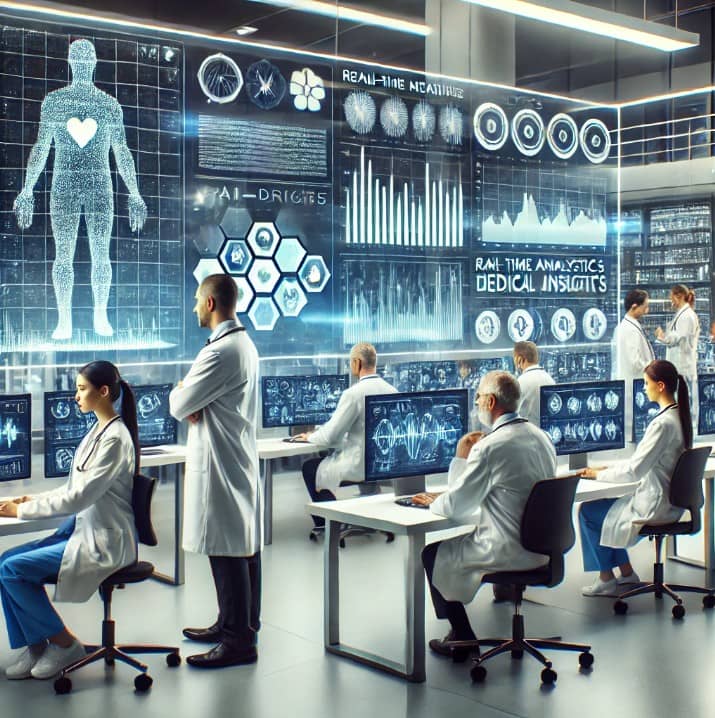In today’s rapidly evolving healthcare landscape, adopting innovative frameworks is essential for improving patient outcomes, reducing costs, and driving advancements. One such transformative approach is the Learning Health System (LHS). Designed to integrate continuous improvement and innovation seamlessly, LHS serves as a dynamic model to ensure healthcare systems not only meet present challenges but are also future-ready.
This blog explores what a Learning Health System is, its benefits, and, crucially, how to implement a learning health system in healthcare to ensure maximum impact.
What Is a Learning Health System?
A Learning Health System is a healthcare framework where data, research, and clinical practice work in a continuous feedback loop to enhance patient care. These systems leverage cutting-edge technologies, including artificial intelligence and data analytics, to analyze vast amounts of healthcare data and generate actionable insights.
Core Principles of an LHS
- Continuous Learning: Healthcare organizations actively learn from every patient interaction to improve future care delivery.
- Data-Driven Insights: A robust data infrastructure ensures evidence-based decision-making.
- Collaborative Culture: Collaboration among researchers, clinicians, and patients drives a shared goal of improved outcomes.
Why Healthcare Needs a Learning Health System
The healthcare industry faces mounting challenges: rising costs, inefficiencies, and a growing demand for personalized care. A Learning Health System addresses these issues by fostering innovation and continuous improvement.
Key Benefits of a Learning Health System
- Enhanced Patient Outcomes: By learning from each patient interaction, LHS improves the quality and safety of care.
- Cost Efficiency: Real-time insights help identify inefficiencies and streamline operations.
- Rapid Innovation: The system accelerates the adoption of breakthrough treatments and technologies.
- Scalability: An adaptable model ensures healthcare systems can respond to emerging needs and trends.
How to Implement a Learning Health System in Healthcare

Transitioning to an LHS requires strategic planning, commitment, and the right resources. Below are the steps to effectively integrate a Learning Health System into your organization.
Step 1: Assess Organizational Readiness
Before adopting an LHS, evaluate your organization’s current infrastructure, technological capabilities, and culture. Identify gaps and prioritize areas that align with your long-term goals.
Step 2: Build a Robust Data Infrastructure
Data is the lifeblood of any Learning Health System. Invest in interoperable Electronic Health Records (EHRs), secure cloud storage, and advanced analytics tools to ensure seamless data collection, sharing, and analysis.
Step 3: Leverage Advanced Analytics and AI
Utilize machine learning algorithms and AI tools to extract actionable insights from clinical data. These technologies can predict patient needs, identify trends, and suggest personalized treatment plans.
Step 4: Foster a Culture of Learning
Encourage collaboration among staff, provide ongoing training, and establish a culture that embraces feedback and adaptability. Employees should feel empowered to contribute to continuous improvement.
Step 5: Establish Strong Governance
A governance framework is critical for ensuring accountability and direction. Appoint a dedicated team to oversee the Learning Health System and set measurable objectives.
Step 6: Engage Patients as Partners
Patients are invaluable contributors to the learning process. Include their feedback in decision-making and leverage patient-reported outcomes to fine-tune care delivery.
Step 7: Monitor Progress and Iterate
Use Key Performance Indicators (KPIs) to evaluate the success of your LHS implementation. Regularly update processes to adapt to new technologies and changing patient needs.
Case Studies: Success Stories in Learning Health Systems
Several healthcare organizations have successfully adopted Learning Health Systems, providing valuable lessons and inspiration.
Case Study 1: Kaiser Permanente
Kaiser Permanente’s integration of a Learning Health System has streamlined patient care by using data analytics to reduce hospital readmissions. Their continuous feedback loop has also improved preventive care services.
Case Study 2: The Mayo Clinic
The Mayo Clinic uses AI-powered LHS frameworks to enhance diagnostic accuracy and personalize treatment plans. This approach has significantly increased patient satisfaction and improved outcomes.
Challenges in Implementing a Learning Health System
While the benefits of a Learning Health System are undeniable, implementation can present challenges. Here’s how to address them:
Data Privacy and Security
Healthcare organizations must comply with regulations like HIPAA to protect sensitive data. Investing in robust cybersecurity measures is essential.
Technical Barriers
Interoperability remains a significant hurdle. Choosing platforms that integrate seamlessly across different systems can mitigate this issue.
Resistance to Change
Stakeholders may resist adopting new processes. Transparent communication and demonstrating the value of an LHS can help overcome this resistance.
The Future of Learning Health Systems

The future of healthcare will be shaped by Learning Health Systems as they evolve to incorporate emerging technologies and address ethical considerations.
Emerging Trends
- Personalized Medicine: Integrating genomic data into LHS frameworks for customized treatments.
- Telemedicine: Using remote monitoring to continuously update patient data and provide real-time care.
- Blockchain Technology: Enhancing data security and ensuring transparent information sharing.
Ethical Considerations
As Learning Health Systems rely heavily on data, ethical issues surrounding consent, bias, and equity must be addressed. Implementing transparent policies and engaging diverse stakeholders can mitigate these challenges.
A Learning Health System represents a paradigm shift in healthcare, where continuous learning and innovation become the foundation for improved patient outcomes. By understanding how to implement a learning health system in healthcare, organizations can ensure they remain at the forefront of medical advancements while delivering exceptional care.
Adopting an LHS is not just a technological upgrade; it’s a commitment to a patient-centered, data-driven, and future-ready approach to healthcare. For organizations willing to embrace this transformative model, the rewards are immense: better care, happier patients, and a more efficient system.
Is your healthcare organization ready to embrace the future? Start building your Learning Health System today. Share this post to inspire others and become part of the innovation movement in healthcare!

